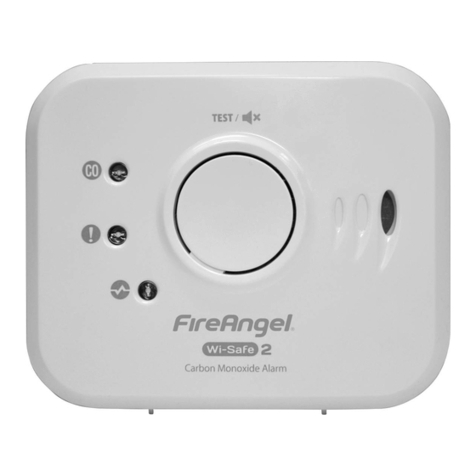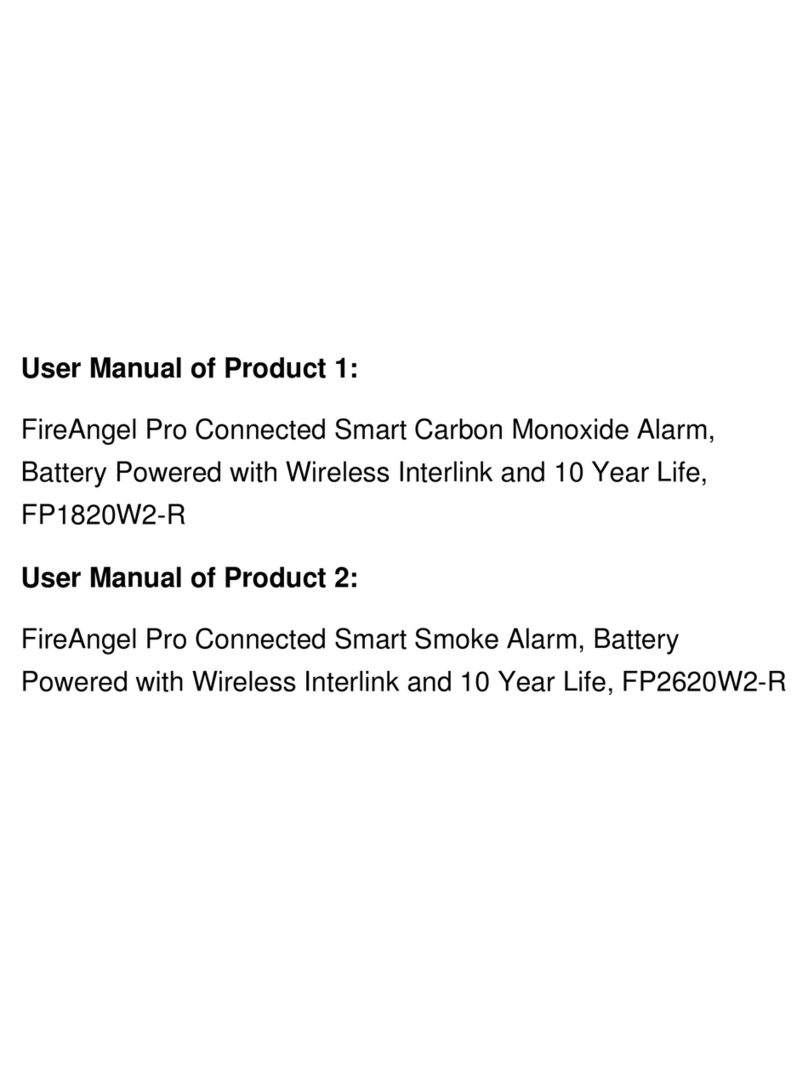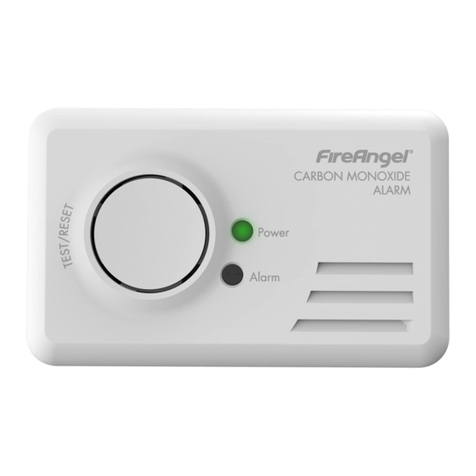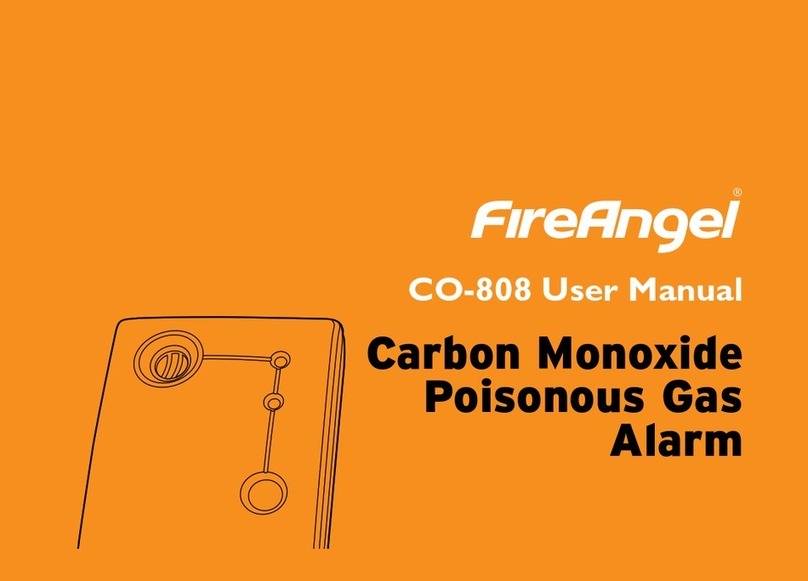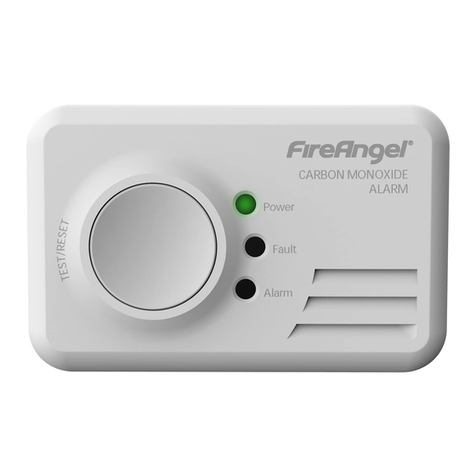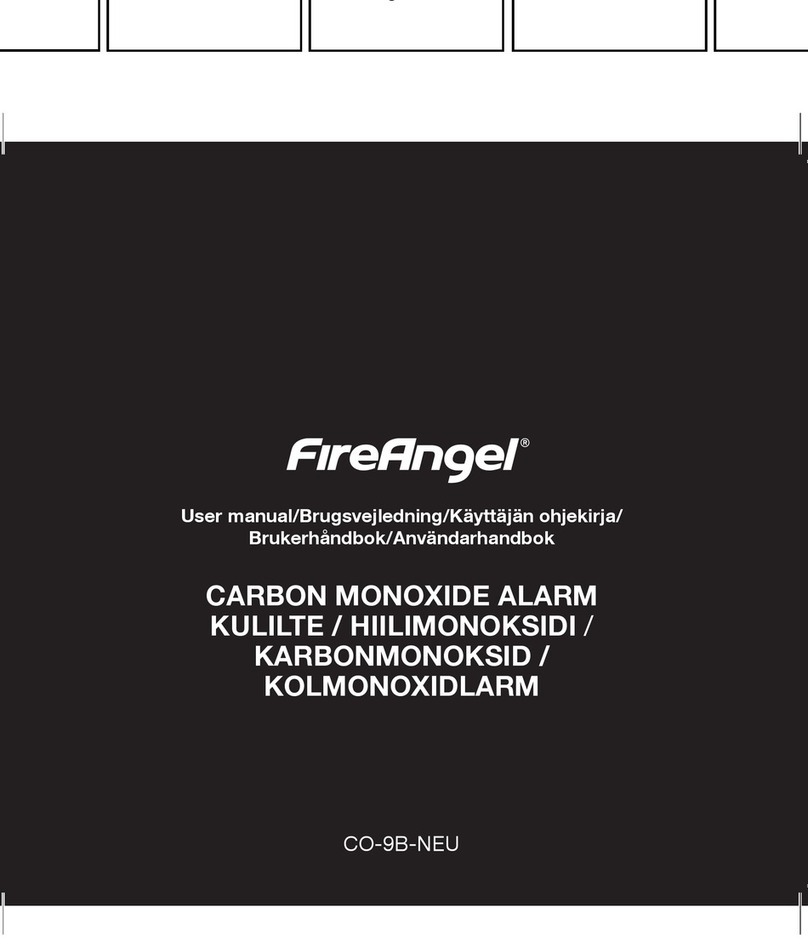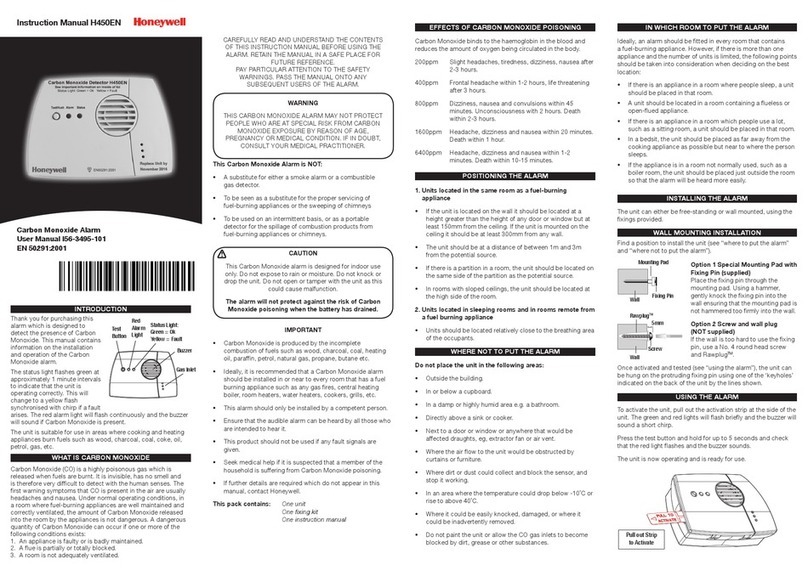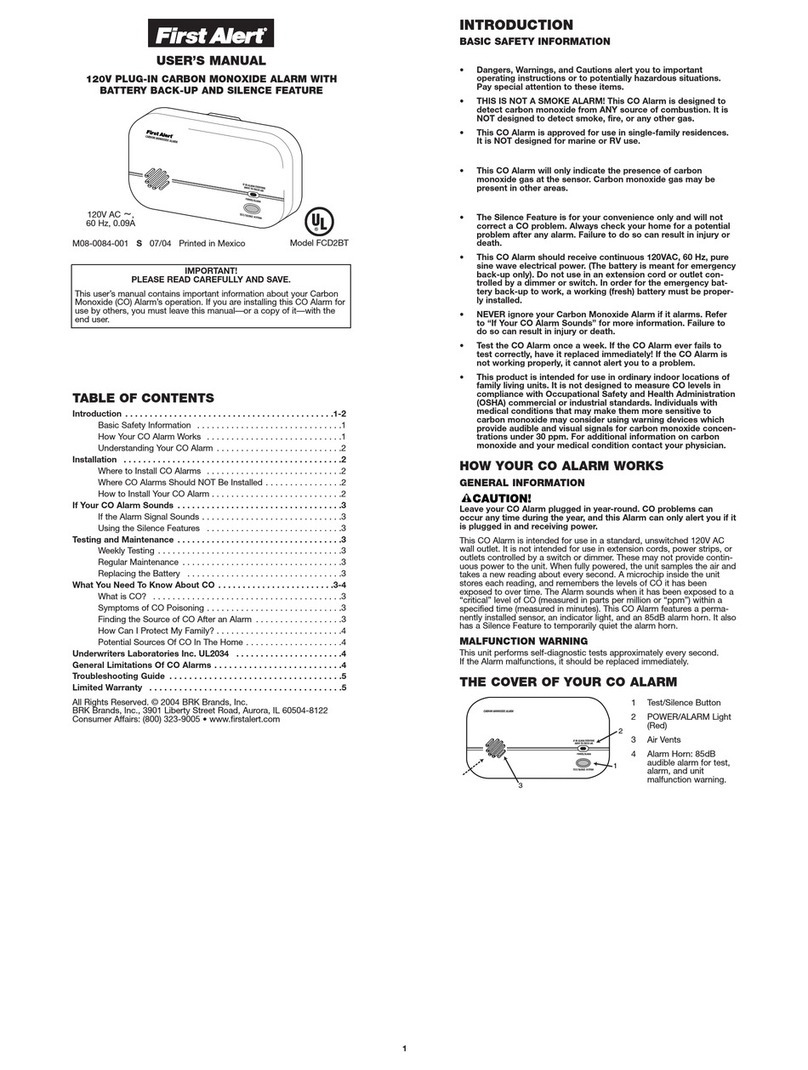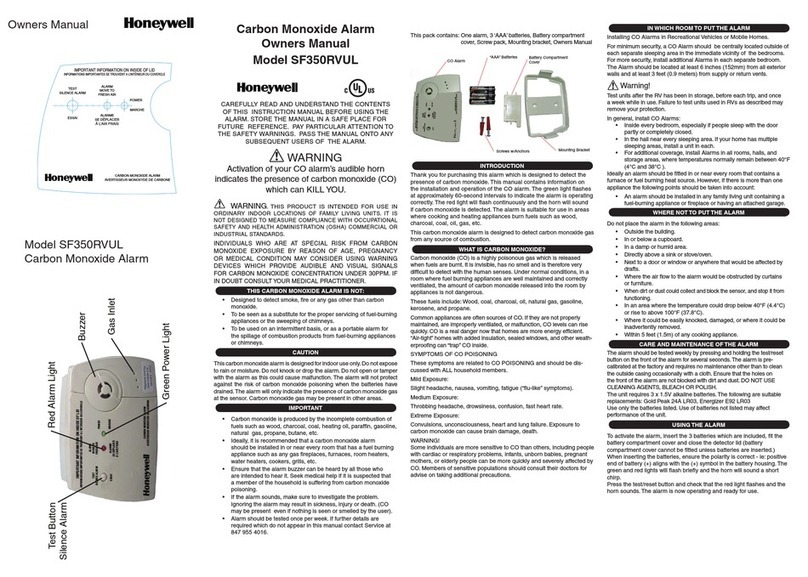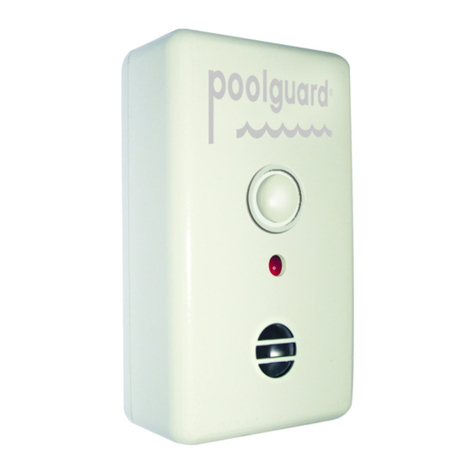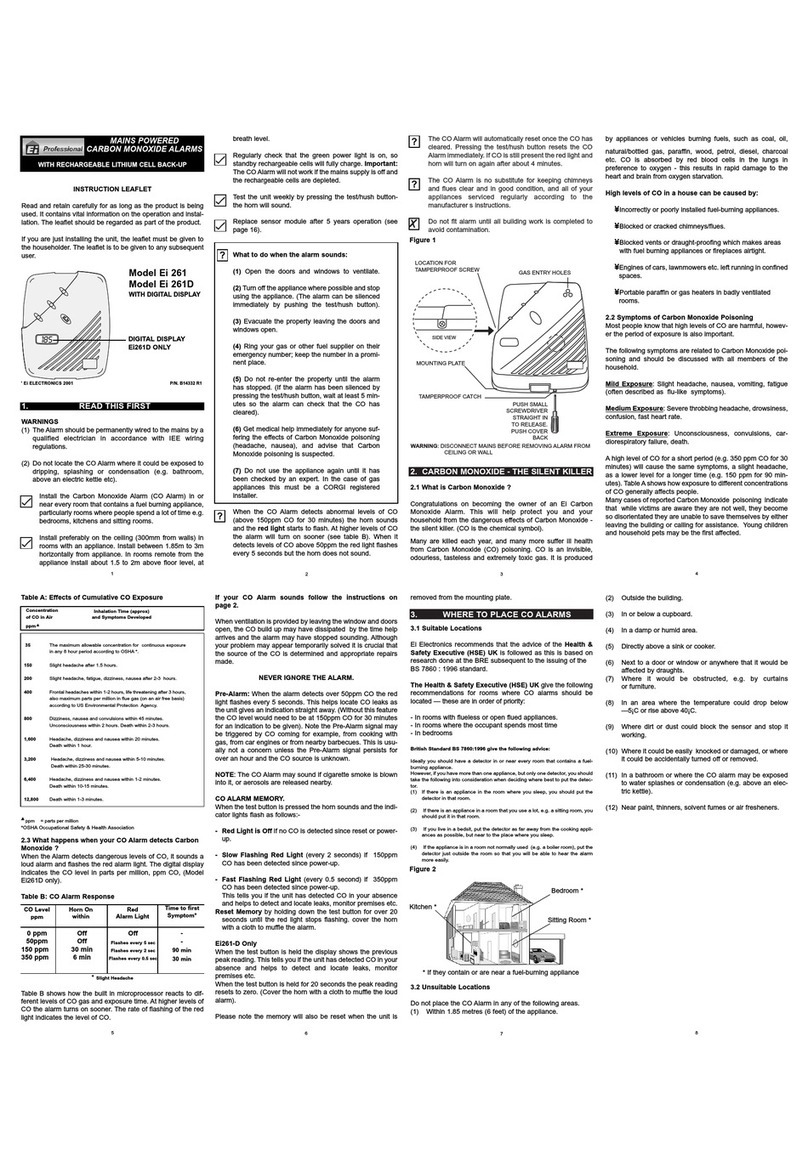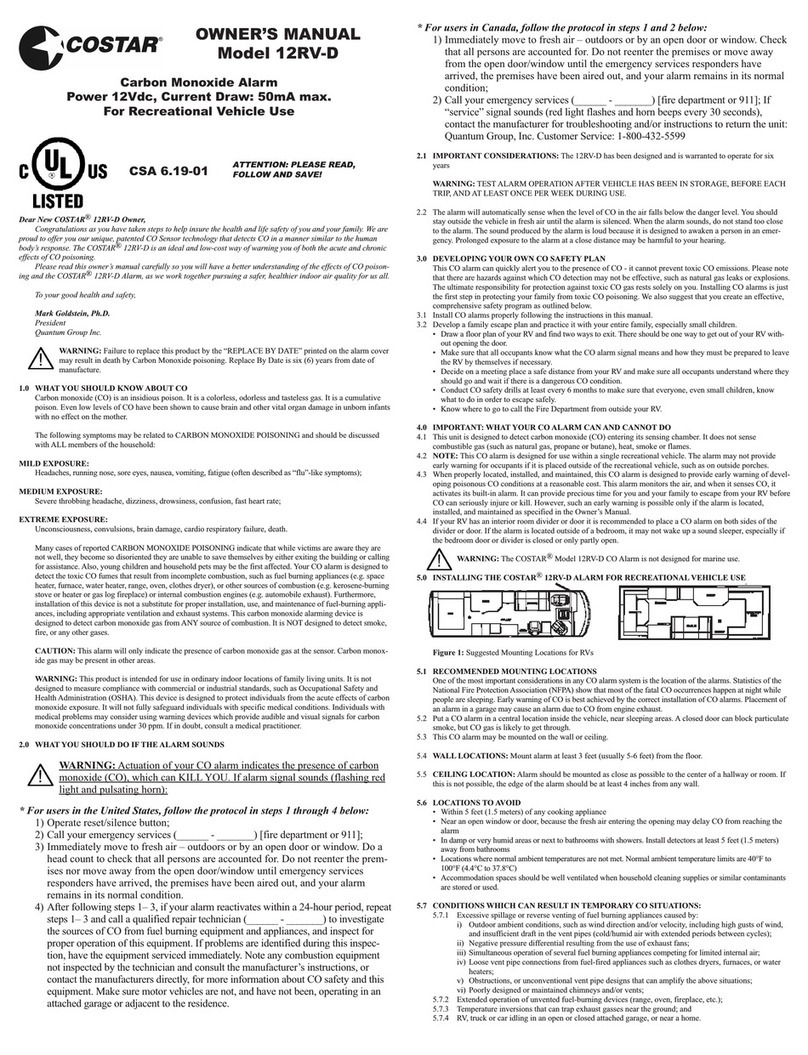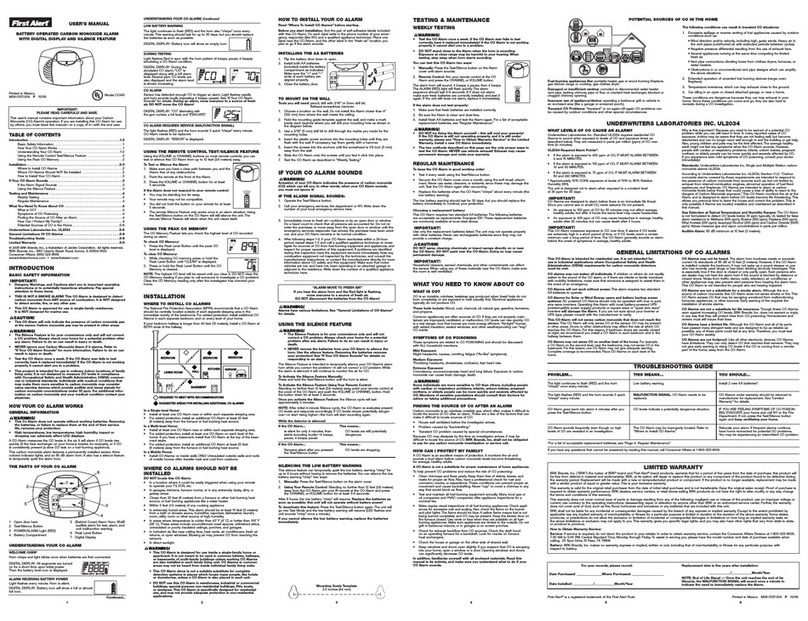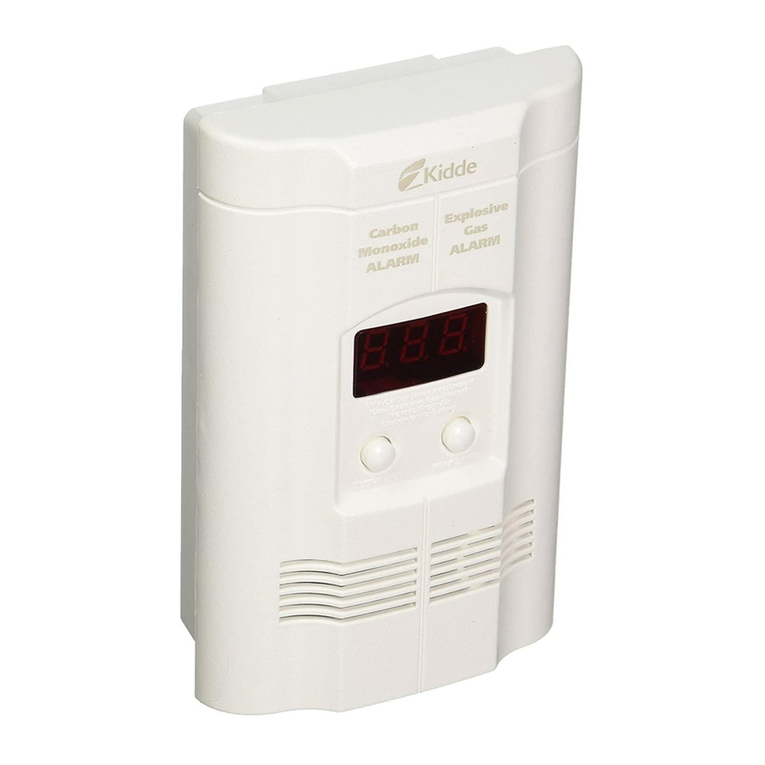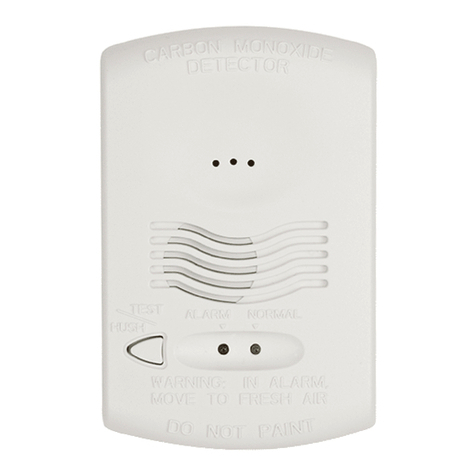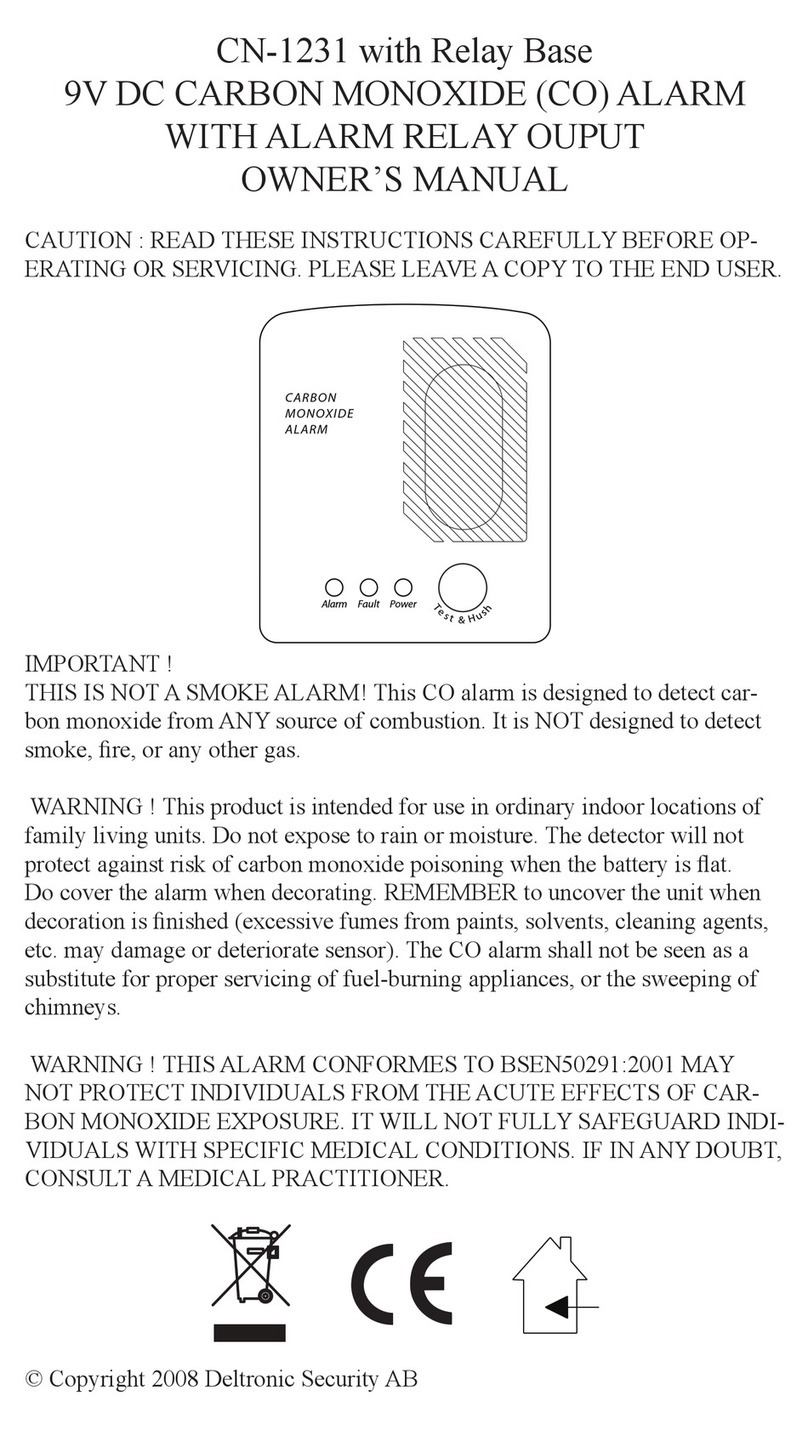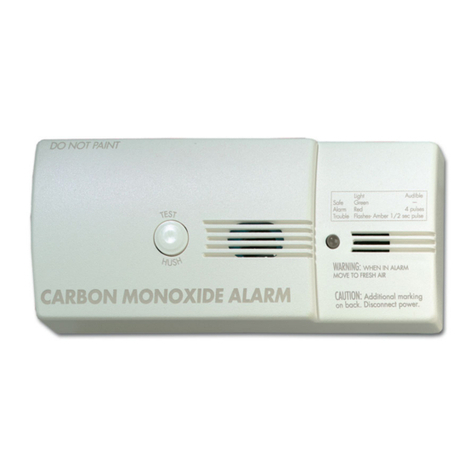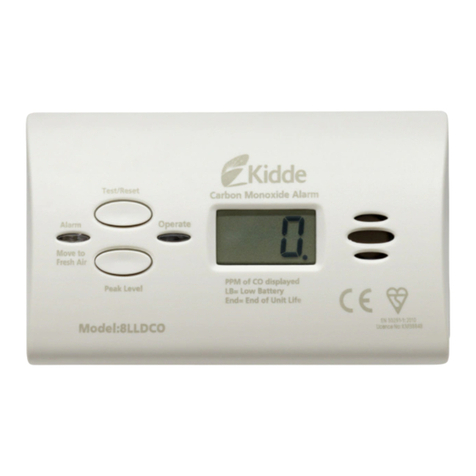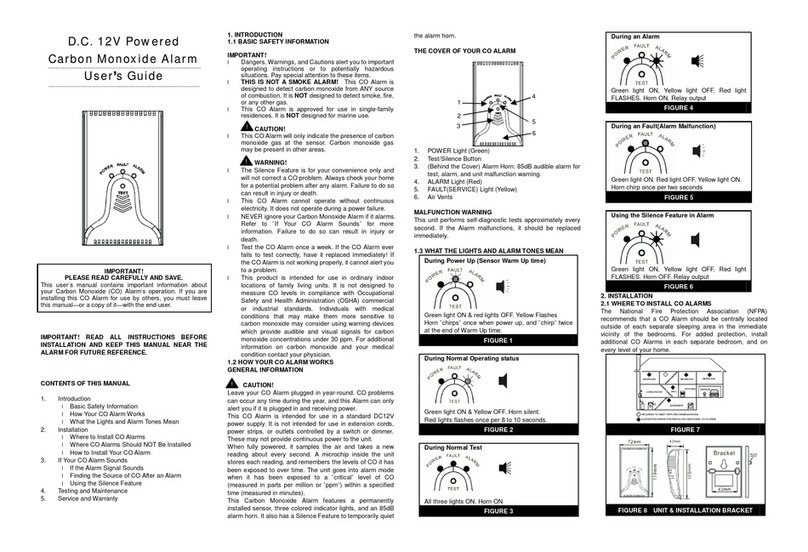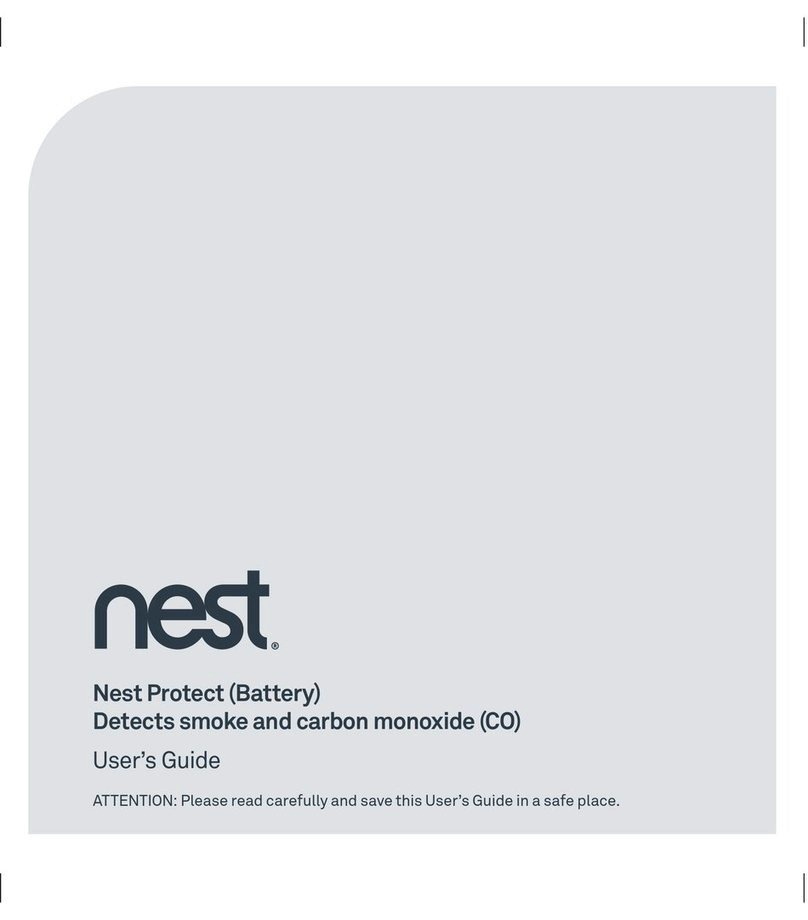
3
CARBON MONOXIDE
AND HOW IT CAN
AFFECTYOU ANDYOUR
FAMILY
Carbon monoxide is a dangerous, poisonous gas
that kills hundreds of people each year and injures
many more. It is often referred to as the silent
killer because it has no odour or taste and cannot
be seen. Like oxygen, CO enters the body through
the lungs during the normal breathing process. It
competes with oxygen by replacing it in the red
blood cells, thereby reducing the ow of oxygen
to the heart, brain and other vital organs. In high
concentrations, CO can kill in minutes.
Many cases of reported CARBON MONOXIDE
POISONING indicate that while victims are
aware they are not feeling well, they become
disorientated and unable to save themselves by
either exiting the building or calling for assistance.
Exposure during sleep is particularly dangerous
because the victim usually does not wake up.
Symptoms of CO poisoning
The following symptoms may be related to CO
poisoning which all household members should
be made aware of:
• MildExposure:Slightheadache,nausea,vomiting,
fatigue(oftendescribedas‘u-like’symptoms).
• MediumExposure:Severethrobbingheadache,
drowsiness,confusion,fastheartrate.
• ExtremeExposure:Unconsciousness,convulsions,
cardiorespiratoryfailure,death.
Your FireAngel CO detector monitors the level of
CO as parts per million (ppm) in the atmosphere
of your property.
35ppm The maximum allowable concentration
for continuous exposure for healthy
adults in any 8 hour period, as
recommended by the Occupational
Safety and Health Administration
(OSHA).

